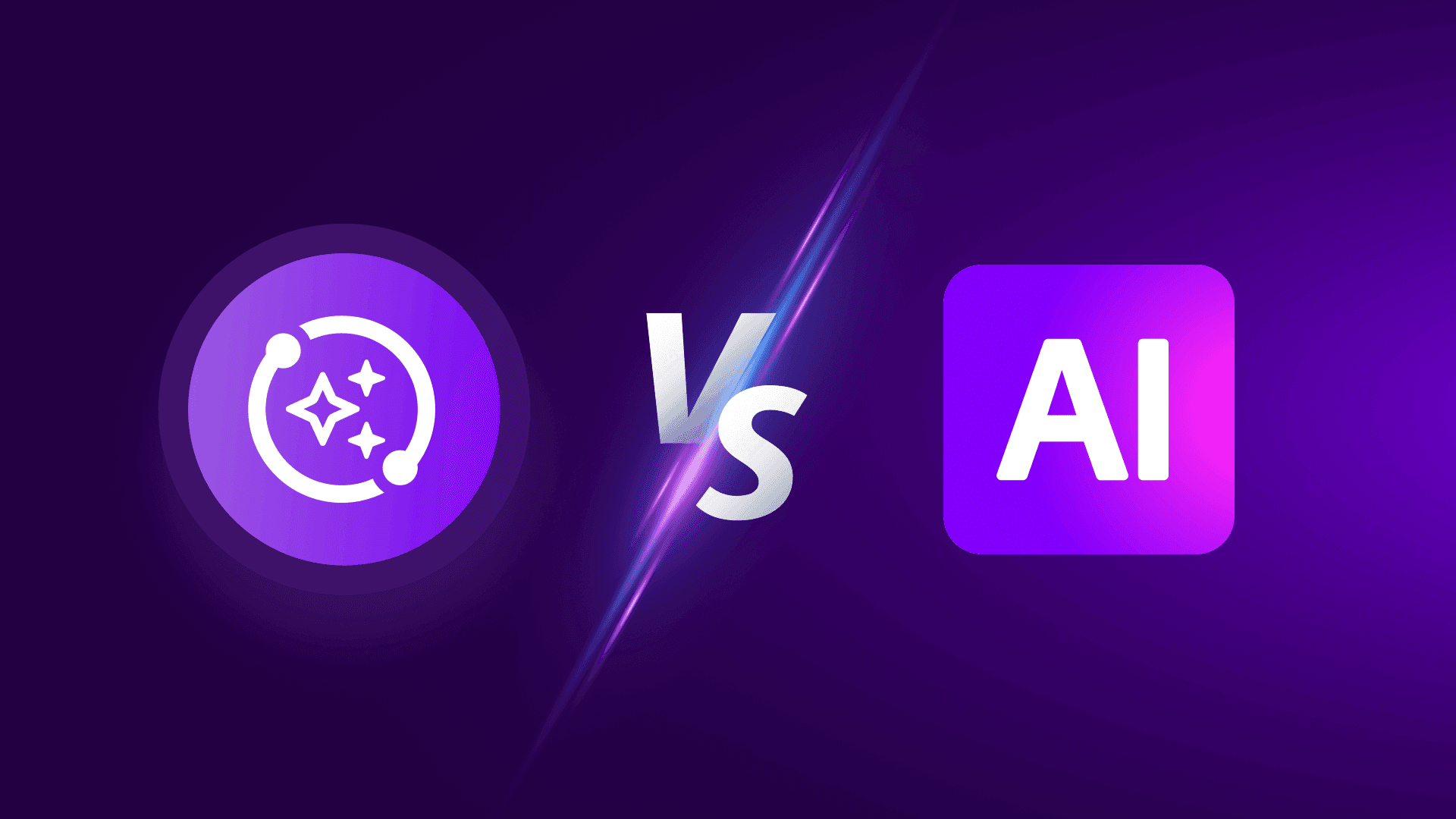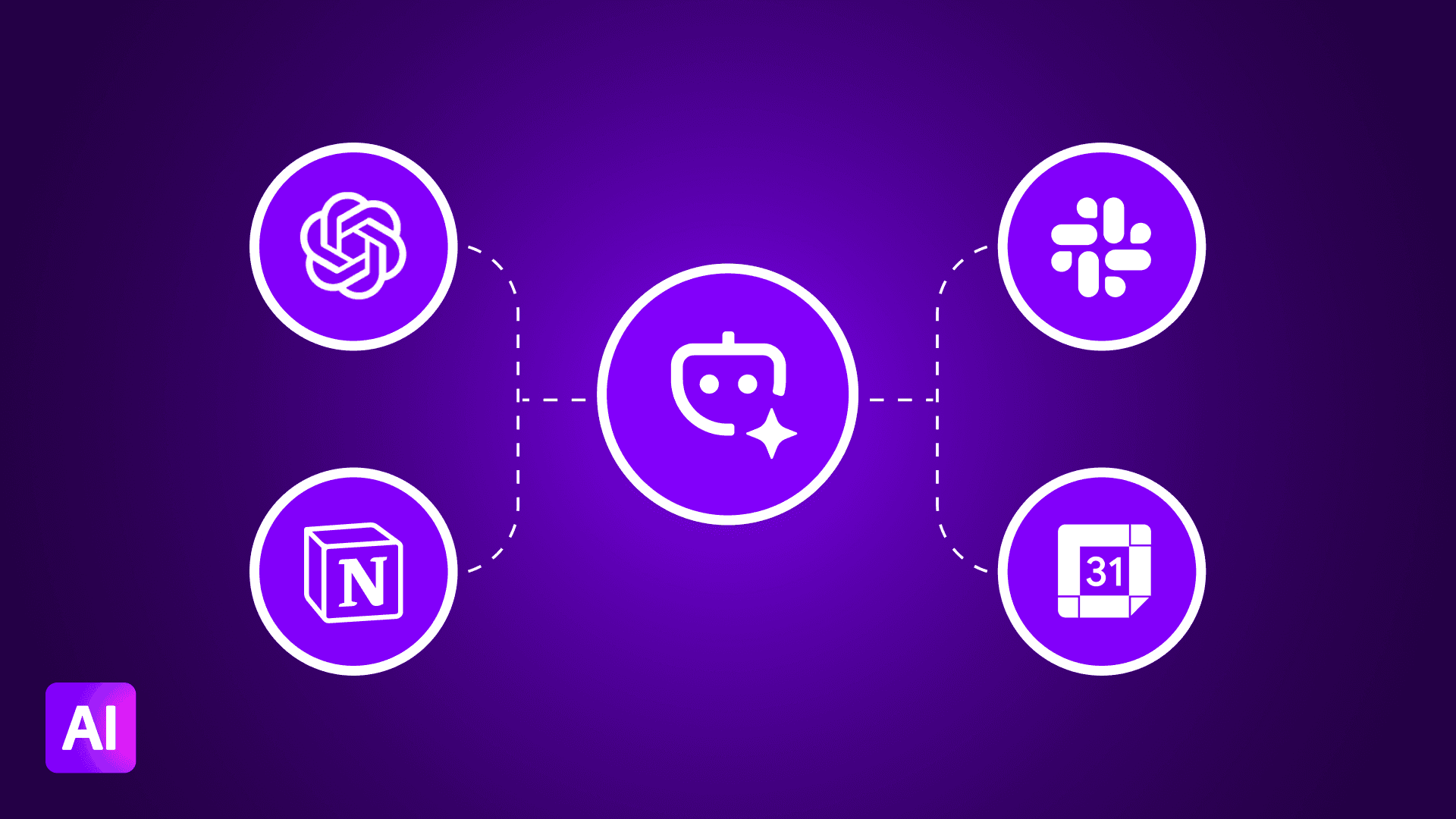May 30, 2025 | 4 minutes
How to determine when to use traditional automation vs. AI agents
Make's David Gurr, Senior Partner Manager, and Benjamin Potet, CXP Solution Architect, break down how deterministic automation isn't dead – getting the most out of traditional versus agent-driven automation is a matter of knowing your processes and goals.

Make AI Agents have introduced a new, powerful, no-code way to automate. But how do agents fit alongside the classic way of building automations? Are we done with deterministic logic and manual set-ups now?
In this explainer video, David Gurr, Senior Partner Manager at Make, and Benjamin Potet, CXP Solution Architect at Make, break down how AI agents compare to traditional scenarios, even those that include some AI modules. Their side-by-side demo walks through the same use case built with and without an agent, with the aim of giving you a finer understanding of the ins and outs of Make AI Agents and when they're best suited to the job. Watch the full webinar below or read our handy summary.
What are AI Agents?
AI Agents bring reasoning and adaptability into your automation setup in Make.
Instead of manually building out every step, Agents let you describe what you need in natural language, then work out how to make it happen using the 2,500+ apps and tools already available in Make.
Think of them as intelligent operators that sit inside Make scenarios.
They’re able to interpret fuzzy or unpredictable input (even with spelling errors), decide which existing sub-scenarios, apps or other Agents to call on, and handle back-and-forth interactions or multi-step requests.
Do AI Agents replace traditional automation?
In a word, no.
There’s still a time and place for classic or deterministic automation, with and without AI added in.
As Ben explains, “AI Agents are not meant to replace what you’ve built in Make – they are simply another tool in your automation kit.”
What’s the difference between AI agents and traditional workflow automation?
Classic automation is deterministic, or rule-based – you define every step and create routes that your bundles of data will follow every time. It's ideal for structured, repetitive, and most of all predictable tasks. It succeeds at dealing with well-defined inputs and outputs, but scenarios can get big fast and take time to maintain.
Agentic automation, on the other hand, is goal-based. You tell the agent or agents what you want, your agent assesses the resources – usually other scenarios or subscenarios – you've made available, and figures out how to accomplish the task you've outlined. Scenarios stay smaller and updates are easier because the agent handles the majority of the logic for you, even if your explanation is in "messy" language.
Agentic vs. classic AI in action
To show the difference between classic and agentic automation, Ben demos the same use case built two ways.
The example task is managing contacts in a database, using Telegram as a trigger for receiving user input. It includes adding a contact, updating or deleting a contact, searching contacts, and requesting follow-up tasks like filtering or exporting to CSV.
Here’s how each version works.
Want more webinars from Make? 🎥
Enjoying this content? We've got plenty more webinars covering big AI ideas to narrowly focused use cases. Check out past and upcoming sessions on our webinar listing page.
The traditional approach
Tackling the task using a classic Make scenario with fixed logic involves a number of steps:
Sub-scenarios are built to create, update, delete, and search contacts.
Manual routing is set up, with an AI module to detect intent and route to the right sub-scenario.
Follow-up logic is set to detect incomplete input and to send follow-up questions to collect missing details.
Using this approach, the scenario is able to handle simple commands, like ‘add a new contact’ or "list contacts" without issue. It also manages follow-ups and calls the right sub-scenario based on the intent.
However, if a request is more complex, such as "list contacts in China and send a CSV', the scenario can’t respond correctly because that kind of logic hasn’t been built in.
The AI Agents approach
The same sub-scenarios (to create, update, delete, and search contacts) are used as the basis for tackling the same task in Telegram. Except this time:
Instead of building routes or filters, a Make AI Agent module is added.
Each sub-scenario is given a short description so the agent understands when to use it.
A Telegram message triggers the agent, which handles everything from there.
In this approach, no routing logic is needed. The AI agent can interpret intent and handle follow-ups automatically.
It also adapts to complex or unexpected inputs. For example, when asked to export contacts from China to CSV, it pulls all contacts, filters by city, and formats the response – even though that functionality isn’t explicitly programmed in a traditional scenario.
The bottom line
The traditional deterministic scenario worked, but it was less flexible and less intuitive – it could do a lot, but nonetheless ran into limitations.
In contrast, the version built with Make AI Agents was equally easy to set up and could intelligently handle a wider range of requests – including things the classic version couldn’t.
Knowing the best place to employ a traditional approach versus an agentic approach hinges on intimately understanding your business processes – which are rote and predictable, and which hinge on having flexibility built-in?
Try AI Agents today
Here’s how to get started:
Want to dig deeper on setting up Make AI Agents? 🔍
Below is the short version to get you started. If you want a full in-depth treatment of setting up your first AI Agents with Make, read our dedicated how-to guide.
Make sure AI Agents are enabled in your plan – they're currently available on all paid plans. Don’t have a Make account? Sign up here.
Create a new scenario and add an AI Agent module.
Assign your sub-scenarios as tools, and describe what each one does so the agent knows when to use it.
Test and fine-tune your prompts. You can trigger the agent using Telegram, webhooks, scheduled runs, or any input method you prefer. Browse Make’s library of apps to see what’s possible.
You’ll find documentation, examples, and support at make.com/help and in the Make Community.
Be part of the future of automation
AI Agents are still evolving. The feature is fully usable today, but it’s in public beta – so things may change quickly as development continues. We're actively improving the experience based on user feedback. If something isn’t right, please let us know – your input directly shapes what comes next.





